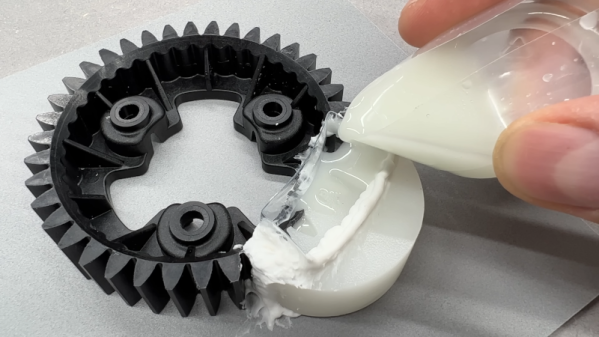There are limits to what you can do with an FDM printer to make your parts stronger. It really comes down to adding more plastic, like increasing wall thickness or boosting up the infill percentage. Other than that, redesigning the part to put more material where the part is most likely to fail is about the only other thing you can do. Unless, of course, you have access to a fiber laser cutter that can make internal metal supports for your prints.
As [Paul] explains it, this project stemmed from an unfortunate episode where a printed monitor stand failed, sending the LCD panel to its doom. He had taken care to reinforce that part by filling it with fiberglass resin, but to no avail. Unwilling to risk a repeat with a new tablet holder, he decided to test several alternative methods for reinforcing parts. Using a 100 W fiber laser cutter, he cut different internal supports from 0.2 mm steel shim stock. In one case he simply sandwiched the support between two half-thickness brackets, while in another he embedded the steel right into the print. He also made two parts that were filled with epoxy resin, one with a steel support embedded and one without.
The test setup was very simple, just a crane scale to measure the force exerted by pulling down on the part with his foot; crude, but effective. Every reinforced part performed better than a plain printed part with no reinforcement, but the clear winner was the epoxy-filled part with a solid-metal insert. Honestly, we were surprised at how much benefit such a thin piece of metal offered, even when it was directly embedded into the print during a pause.
Not everyone has access to a fiber laser cutter, of course, so this method might not be for everyone. In that case, you might want to check out other ways to beef up your prints, including just splitting them in two.
Continue reading “Laser-Cut Metal Endoskeleton Beefs Up 3D Prints” →


















